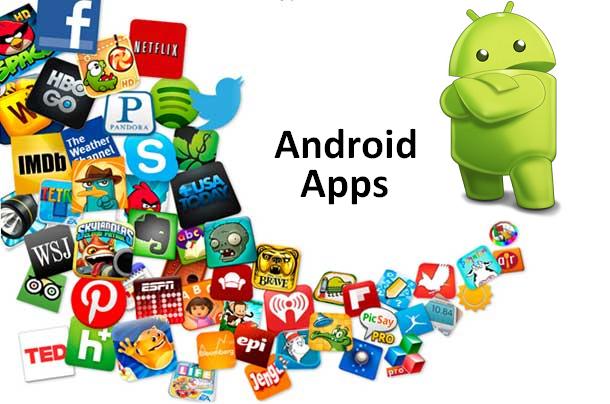The Evolution of Web Development: From HTML to Progressive Web Apps
Since its inception, the field of web development has undergone a remarkable journey of innovation and reinvention. From the early days of static HTML pages to the immersive experiences of Progressive Web Apps (PWAs), the development of the web has evolved throughout time, reflecting both the quick advancement of technology and the constantly shifting expectations of users . This blog explores this fascinating development, tracing the route from HTML to the world of PWAs.
1)Laying the Foundation: The HTML Era
- The introduction of Hypertext Markup Language (HTML) in the 1990s laid the foundation for modern web development.
- HTML gave web pages a basic structure by utilizing straightforward tags to format text, incorporate images and create hyperlinks.
- Early webpages lacked intricacy and were largely static. To organize content HTML had to be mastered for designing.
- The development of Cascading Style Sheets (CSS), which separates content from aesthetics, gave developers more power.
- This division made it possible to precisely manipulate the visual and layout elements. Developers could now adjust the visual design of websites without changing the content itself.
- The foundation for dynamic and aesthetically pleasing web experiences was created by the symbiotic evolution of HTML and CSS, paving the way for the ongoing advancement of web development.
2)Interactivity and Dynamic Content through JAVA Script
- The introduction of JavaScript in the mid 1990s revolutionized web development.
- It facilitated the transition from static web pages to dynamic web apps by enabling developers to add interactivity and dynamic elements to websites.
- Without requiring a full page reload, websites may now respond to user inputs, validate forms and change content.
- This crucial development signaled a turning point in the development of the web.
- This growth was further expedited by JavaScript libraries and frameworks like jQuery, which made development simpler and sped up the process.
- This time period created the foundation for today’s web environment, where dynamic content and easy user interaction are now fundamental elements of the online experience.
3)The Rise of Dynamic Web Applications
- Dynamic web applications first appeared in the early 2000s, combining HTML, CSS, and JavaScript to create visually appealing user interfaces.
- Notably, the introduction of AJAX (Asynchronous JavaScript and XML) was revolutionary since it made server data retrieval possible without requiring page reloads.
- This innovation played a pivotal role in shaping the evolution of custom web application development by enabling developers to create responsive and interactive experiences.
- This innovation sparked the growth of web apps like Gmail, which enable users to browse emails conveniently on the same page.
- Because AJAX is asynchronous, developers can create experiences that are more responsive and fluid, moving away from static web pages.

4)The Era of Responsive Design
- Due to the increased use of mobile devices, web designers now had to adapt websites to different screen sizes and orientations.
- Responsive web design, a crucial idea that encourages the production of flexible websites that dynamically reconfigure their structure and content to suit users’ devices, was born out of this situation.
- Whether a user was accessing the site via a desktop, tablet or smartphone, responsive design was important since it could guarantee user pleasure by delivering consistent and optimized experiences.
- The resulting harmonization of digital experiences and alignment with users’ changing expectations signaled a paradigm shift in web development.
5)Web Development Frameworks
- Web development frameworks came into being as a result of the requirement for efficiency and standardization.
- The three most prominent frameworks that introduced the idea of component-based architecture are Angular, React, and Java.
- This innovation made it possible for developers to create complex web apps more quickly. These frameworks promoted code modularity and reusability by making it easier to create reusable components.
- They also streamlined development operations by simplifying the processing of program state and user interfaces. The consistency and scalability of projects were improved during this transition, which represented a turning point in online development.
- As a result, instead of wrestling with the complexities of creating apps from scratch, developers could concentrate more on creating new functions, changing the course of online development.
6)Progressive Web Apps(PWA): Bridging Web &Mobile Apps
- PWAs were created to satisfy the growing need for app-like interactions on the web.
- PWAs combine native mobile app immersion with online accessibility to combine the best aspects of both worlds. They include features like push alerts, offline accessibility, and improved speed.
- A key PWA technology that enables web pages to cache resources and operate offline is the service worker.
- With this invention, web development will no longer require online connectivity, as it did with traditional web development.
- By providing seamless experiences regardless of connectivity, successfully bridging the gap between online and native applications and altering user expectations for web interactions, PWAs represent a paradigm shift.
Key Characteristics of PWA
- Offline Access: PWAs use caching techniques to keep vital assets on hand so users may access material even when offline.
- Responsive and adaptive: PWAs are responsive and adaptable, offering a uniform user experience across platforms regardless of the device or screen size.
- App-like experience: PWAs imitate the experience of native applications through fluid animations and navigation.
- Push notifications: PWAs have the ability to give users push alerts even when the app is not active.
- Fast Loading: By caching resources, service workers, a key PWA technology, offer speedy loading times.
- Secure: PWAs are delivered over HTTPS, which guarantees user confidence and data security.
- Discoverable: Just like conventional websites, PWAs may be indexed by search engines.
7)Web Assembly and Beyond: Evolving Ecosystem
- A pioneering force driving the growth of web development is Web Assembly (Wasm).
- It enables programmers to run code written in languages like C, C++, and Rust in web browsers at speeds that are very close to native.
- This innovation makes it possible for complex programs like video editing software and game engines to function without a hitch in the browser environment. Wasm adds a new level of adaptability and promise by bridging the performance gap between web and native applications.
In conclusion, the evolution of web development from HTML to PWAs, is a monument to human creativity and the unrelenting pursuit of better user experiences. Each stage has expanded the capabilities of the web, from static sites to dynamic web apps, responsive design and the emergence of PWAs. As technology develops, web development will remain a dynamic industry, influencing how we engage with the digital world.
GoodWorkLabs is the world’s leading software and app development company that delivers cutting-edge custom solutions for global customers. We help our customers ideate, design, develop and launch beautiful & scalable software solutions to succeed in their industries. At GoodWorkLabs Dubai, San Francisco, Bangalore, and Kolkata, India, our approach to developing world-class Enterprise Apps involves comprehensive planning and an Enterprise App Strategy that is guaranteed to address critical business needs. We develop Enterprise Apps that are built to outlast the market while being able to adapt to various factors such as form factors and changing user/business needs. From the Enterprise App Development perspective, our main goal is to not only create a seamlessly connected and quick business application, but it is also to ensure that all information transfer is secure and protected. We are a team of Enterprise App Developers who are constantly experimenting with new technology and finding better ways to work on creating strong business impact. That, we believe, is our core strength while developing cutting- edge Enterprise Mobility and App Solutions.





